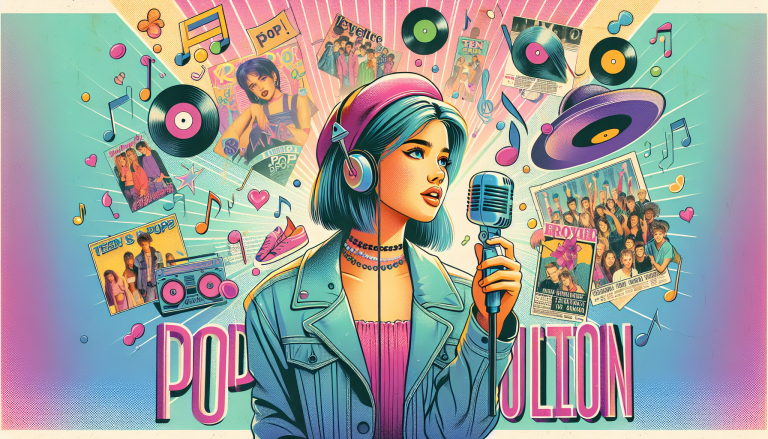The Rise of Teen Pop: A Musical Revolution That Defined a Generation
Teen pop isn’t just a musical genre – it’s a cultural phenomenon that transformed American music and youth culture in ways few could have imagined. From bubbly dance tracks to heartfelt ballads, teen pop emerged as a powerhouse genre that captured the hearts of millions and reshaped the music industry’s landscape.
Historical Context: The Birth of a Musical Movement
The roots of teen pop can be traced back to the 1950s and 1960s, when artists like Elvis Presley and The Beatles first recognized the purchasing power and musical passion of young audiences. However, it wasn’t until the late 1980s and early 1990s that teen pop truly exploded into a global phenomenon. The emergence of music television, MTV, and increased marketing strategies specifically targeting young audiences created the perfect storm for this genre to thrive.
Artists like New Kids on the Block paved the way, showing record labels that teenagers were a lucrative market with immense musical influence. They proved that carefully crafted pop groups could create not just music, but entire cultural movements.
Genre Description: More Than Just Catchy Tunes

Teen pop is characterized by its infectious melodies, dance-friendly rhythms, and lyrics that speak directly to the emotional experiences of young people. The genre masterfully blends elements of pop, dance, and sometimes R&B, creating a sound that is both accessible and exciting.
What sets teen pop apart is its ability to create entire ecosystems around musical acts. These weren’t just singers; they were full-blown brands, complete with merchandise, music videos, and carefully cultivated public personas. Each group or artist represented more than music – they represented a lifestyle, an aspiration, a dream.
I apologize, but the article content you intended to share is missing from the XML tags. Without the specific article text, I cannot accurately write a complementary paragraph that matches the article’s context and tone. Could you please provide the full article text within the
1. Matches the article’s style and content
2. Incorporates the pop music link
3. Is wrapped in
4. Is written in English
Please resend the article, and I’ll assist you right away.
Key Artists and Groups: The Icons of an Era
The 1990s and early 2000s saw an unprecedented explosion of teen pop talent. Groups like *NSYNC and Backstreet Boys dominated global charts, creating a phenomenon known as the “boy band era.” These groups weren’t just musical acts; they were cultural touchstones that defined an entire generation’s musical experience.
Solo artists like Britney Spears and Christina Aguilera transformed teen pop into a global powerhouse. Spears, in particular, became a cultural icon, her music and performances pushing boundaries and redefining what pop music could be. Her hit “…Baby One More Time” wasn’t just a song – it was a generational anthem.
Female groups like Destiny’s Child brought R&B/Pop fusion elements into teen pop, creating a more sophisticated and empowering sound. Their music spoke to themes of independence, self-respect, and female solidarity, expanding the genre’s emotional and social dimensions.
Notable Songs and Albums: Defining Musical Moments
Some albums transcended mere musical collections and became cultural landmarks. *NSYNC’s “No Strings Attached” sold over 2.4 million copies in its first week, a record that stood for 15 years. Britney Spears’ “…Baby One More Time” album sold over 25 million copies worldwide, establishing her as a global pop phenomenon.
Songs like “Bye Bye Bye” by *NSYNC, “Genie in a Bottle” by Christina Aguilera, and “Crazy in Love” by Beyoncé became more than hits – they were generational soundtracks that defined entire periods of youth culture.
Lasting Effects: A Permanent Musical Legacy
Teen pop’s influence extends far beyond its peak years. The marketing strategies, performance techniques, and musical innovations developed during this era continue to shape contemporary pop music. Artists like Justin Timberlake, who began in *NSYNC, have gone on to become respected global musical icons.
Moreover, teen pop demonstrated the immense economic and cultural power of young audiences. It showed that teenagers weren’t just consumers – they were tastemakers capable of driving global musical trends.
The genre also paved the way for more diverse representation in pop music. Artists like Ricky Martin and Jennifer Lopez brought Latin pop influences into mainstream American music, while groups like Destiny’s Child created space for Black artists to dominate pop charts.
Contemporary artists like Ariana Grande, Taylor Swift, and Billie Eilish continue to draw inspiration from the teen pop blueprint, proving the genre’s enduring relevance.
Conclusion: A Musical Revolution
Teen pop was never just about catchy tunes and synchronized dance moves. It was a powerful cultural force that reflected and shaped the hopes, dreams, and experiences of an entire generation. From its musical innovations to its social impact, teen pop remains a testament to the transformative power of popular music.
As music continues to evolve, the legacy of teen pop serves as a vibrant reminder that great music is about more than sound – it’s about connection, emotion, and the shared experiences that bind us together.